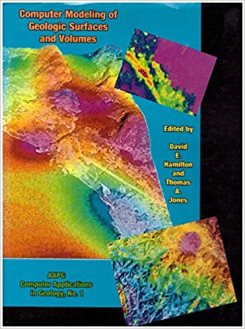| 1-8 | A Philosophy of Contour Mapping with the Computer |
| 9-26 | Graphical Techniques for Locating Anomalies |
| 27-36 | The Shape-Assist Technique: Incorporating Stream Channel Interpretations into Computer-Generated Surface Models: Clark County, Kansas |
| 37-46 | Computer-Generated Surfaces and Grids of the Geometry, Rock Type, and Chemistry of a Bedded Mineral Deposit |
| 47-60 | Computer Mapping of Pinnacle Reefs, Evaporites, and Carbonates: Northern Trend, Michigan Basin |
| 61-74 | Techniques for Modeling Compaction Applied to the Pinnacle Reef/Carbonate/Evaporite Environment |
| 75-92 | Modeling Anisotropy in Computer Mapping of Geologic Data |
| 93-104 | Surface Modeling for Sedimentary Basin Simulation |
| 105-122 | Testing Hydrocarbon Saturation Models For Use in Original Oil-in-Place Estimation: South Dome of Oregon Basin Field, Park County, Wyoming |
| 123-140 | Fault Representation in Automated Modeling of Geologic Structures and Geologic Units |
| 141-160 | The Gridded Fault Surface |
| 161-174 | Computer Modeling of Multiple Surfaces With Faults: The Ivanhoe Field, Outer Moray Firth Basin, U.K. North Sea |
| 175-182 | Extensions to Three Dimensions: Introduction to the Section On 3-D Geologic Block Modeling |
| 183-202 | Three-Dimensional Geologic Block Model of a Polar Fan-Delta Complex, Canning River, North Slope, Alaska |
| 203-218 | Three-Dimensional Geologic Block Modeling Of The Kutcho Creek Massive Sulfide Deposit, British Columbia |
| 219-234 | The Impact of Vertical Averaging on Hydrocarbon Volumetric Calculations—A Case Study |
| 235-250 | Application of Variable Zone Modeling to Modeling and Mapping of Canadian Oil Sands |
| 251-260 | Three-Dimensional Modeling Techniques in the Analysis of a Mature Steam Drive |
| 261-272 | Three-Dimensional Modeling Of Complex Geological Structures: New Development Tools For Creating 3-D Volumes |

